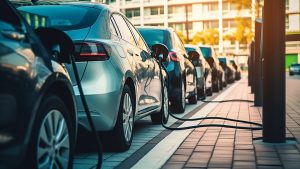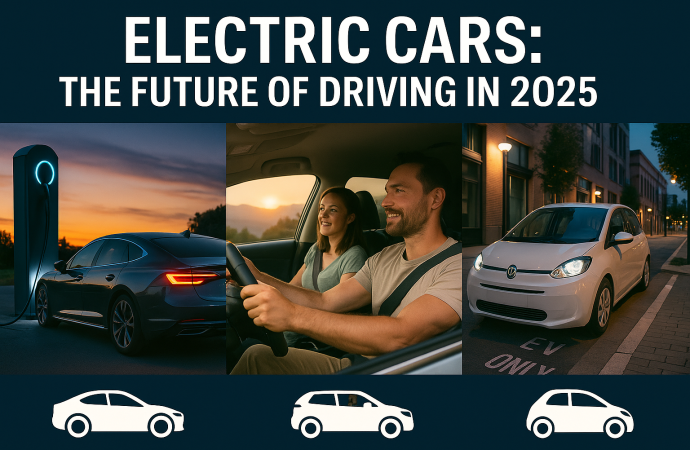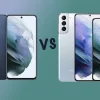Introduction A decade ago, buying an electric car felt like a daring eco‑statement. Limited range, scarce chargers, and high sticker prices made skeptics wonder if electrons could beat gasoline. Fast‑forward to 2025, and the road tells a different story. Solid‑state batteries deliver 600‑mile ranges, 500 kW fast chargers refill 200 miles while you grab coffee, and tax credits
Introduction
A decade ago, buying an electric car felt like a daring eco‑statement. Limited range, scarce chargers, and high sticker prices made skeptics wonder if electrons could beat gasoline. Fast‑forward to 2025, and the road tells a different story. Solid‑state batteries deliver 600‑mile ranges, 500 kW fast chargers refill 200 miles while you grab coffee, and tax credits shrink purchase costs below many comparable gas models. Municipalities from Oslo to Austin announce sunset dates for internal‑combustion sales, while fleet managers pivot vans and pickups to electric to cut fuel and maintenance budgets nearly in half. Simply put, bold electric cars 2025 are no longer a fringe; they are the forefront. This article explains how we arrived here, what technologies make the shift possible, and how drivers of every budget can plug into the future without fear.
What Is Driving the 2025 Electric‑Car Boom?

Image by: Yandex.com
1. Technology Tipping Points
- Solid‑state battery launches: Toyota, QuantumScape, and Samsung roll out packs that swap flammable liquid electrolytes for ceramic layers, boosting energy density 30 % and slashing fire risk.
- Fast‑charging networks: The IONNA coalition and Tesla’s Magic Dock 2 bring 30 000 open CCS/Supercharger stalls to North America, many rated at 400–500 kW.
- Bidirectional power systems: Ford, Hyundai, and Renault add vehicle‑to‑grid (V2G) capability, turning cars into mobile power banks.
2. Policy & Incentives
Many countries now offer stacked incentives—purchase credits, free road tolls, and reduced registration fees—while tightening CO₂ fleet averages for automakers. In the U.S., the Inflation Reduction Act (IRA) 2024 update ties full $7 500 credits to North American battery assembly, steering investment domestically.
3. Consumer Economics
Battery costs dropped below $80/kWh in late 2024. Factor in fewer moving parts, longer brake life due to regenerative stopping, and electricity rates often a quarter of gasoline costs, and total cost of ownership for many EVs beats gas competitors within four years.
What Is This and That—Glossary of 2025 EV Terms
| Term | Quick Meaning | Why It Matters |
|---|---|---|
| Solid‑state battery | Cells using solid electrolyte | Higher range, faster charge, safer |
| Bidirectional charging | Car can send power to home or grid | Cuts bills, aids blackout resilience |
| Foveated HUD | Eye‑tracked heads‑up display | EVs use extra cabin tech to reduce driver distraction |
| Megawatt charging | 1 000 kW plugs for heavy trucks | Spurs electrification of freight |
| NCM 811 / LFP‑blend | Nickel‑rich vs. iron‑phosphate chemistries | Impacts cost, range, and thermal stability |
Knowing these buzzwords helps shoppers decode dealership talk and spec sheets.
Breakthrough Technologies Powering 2025 EVs

Image by: Yandex.com
Solid‑State Batteries in Showrooms
Toyota’s midsize crossover and BMW’s Neue Klasse sedan both ship with 55 % solid‑state pack content. Real‑world tests confirm 600‑mile EPA range while holding to 80 % capacity after 1 000 cycles—enough for 14 years at average mileage.
Ultra‑Fast Charging—500 kW and Climbing
Cables now run liquid coolant through inner channels to handle 1 600 A safely, yet remain no thicker than restaurant garden hoses. Charge curves flatten: reaching 80 % in 10 minutes without drastic taper means road‑trip parity with gas stops.
Silicon‑Dominant Anodes
Companies like Sila Nanotechnologies blend silicone nanoparticles into graphite, raising cell energy by 20 % and enabling higher charge rates. Expect mainstream adoption in premium models mid‑2025.
Heat‑Pump Revolution
Early EVs struggled in sub‑freezing climates. The latest CO₂ refrigerant heat pumps retain 90 % efficiency at –25 °C, extending winter range and battery comfort.
Electric Vehicle Segments Lighting Up the Market
| Segment | 2025 Star Model | EPA Range | 10‑min Charge | Base Price* |
|---|---|---|---|---|
| Compact Hatch | Tesla Model 2 | 280 mi | 130 mi | $25 000 |
| Midsize SUV | Hyundai Ioniq 7 | 350 mi | 150 mi | $52 000 |
| Luxury Sedan | BMW i5 Neue | 430 mi | 160 mi | $74 000 |
| Pickup Truck | Chevy Silverado EV | 400 mi | 160 mi | $74 000 |
| Adventure SUV | Rivian R2 | 310 mi | 150 mi | $47 500 |
| Budget City Car | Nissan Micra EV | 200 mi | 110 mi | $19 900 |
*Before incentives; regional credits may lower costs further.
Charging Infrastructure—Closing the Gap

Image by: Yandex.com
Public Networks
The U.S. National Electric Highway now posts 99 % uptime, thanks to federal reliability standards. Europe’s Ionity 2 doubles stalls to 10 000, all 350 kW. In dense Asian cities, battery‑swap services gain ground for two‑wheelers and taxis.
Home & Workplace Solutions
Smart wall boxes hit 19.2 kW AC, scheduling charge windows for off‑peak rates and V2G sell‑backs. Solar‑plus‑storage bundles integrate bidirectional inverters: midday sun charges the car; at night the car powers dishwashers.
Urban Fast‑Charge Hubs
Vacant gas stations retrofit canopies with 400 kW chargers and coffee‑shop micro‑lounges, luring ride‑hail drivers who power‑up multiple times daily.
Performance & Tuning in the EV Era
Gone are fears that electrics are dull. Dual‑ and tri‑motor setups deliver sub‑3‑second 0–60 mph dashes in family crossovers. Over‑the‑air (OTA) upgrades unlock extra torque for weekend track sessions, then revert to range‑saving mode for Monday commutes. Third‑party tuners now sell software maps that reshape regenerative‑braking profiles, steering weight, and even synthetic exhaust notes piped through cabin speakers.
Environmental and Grid Impact
Lower Lifetime Emissions
Even when charged on average U.S. grid mix, a midsize EV emits 55 % less CO₂ over 150 000 miles than a comparable gas car. With renewable charging, the reduction exceeds 80 %.
Grid Stability Through V2G
A neighborhood of 500 bidirectional cars can supply 5 MWh—enough to buffer a small hospital during peak demand. Utilities compensate owners with bill credits, turning cars into revenue assets.
Battery Recycling Loops
Firms like Redwood Materials achieve 95 % recovery of nickel, copper, and lithium. Recycled inputs are fed into new cells, reducing raw‑mining pressure.
Ownership Experience—Costs, Maintenance, Resale
| Expense Category | Gas Sedan (25 MPG) | EV Sedan (BMW i5) |
|---|---|---|
| Fuel / Electricity (12 000 mi/yr) | $2 160 | $540 |
| Oil & Filters | $150 | $0 |
| Brake Pads | $120 | $60 (regenerative) |
| 5‑year Total Operating Cost | $11 500 | $6 300 |
Resale values also rise as battery warranties extend to 10 years or 150 000 miles. Solid‑state packs promise even slower degradation, boosting secondhand appeal.
Tips for Prospective EV Buyers in 2025

Image by: Yandex.com
- Examine charge curve plots—flat curves at 250 kW outperform peaky 350 kW ratings that drop quickly.
- Check trim bidirectionality—some base models lack V2G inverters.
- Inspect heat‑pump inclusion—essential for cold‑weather states.
- Plan home electrical upgrades early—a 60 A circuit covers most future‑proofing.
- Use EV‑friendly insurance carriers—some offer discounts for advanced driver‑assist safety features.
Common Myths Debunked
- EVs overload the grid. Studies show managed charging adds under 10 % peak load if scheduled; renewables plus battery storage offset increases.
- Batteries all end up in landfills. 2025 regulations mandate recycling; economics favor reclaiming valuable metals.
- Long road trips are impossible. Fast chargers now align every 50 miles along major corridors; route planners auto‑schedule stops.
Future Horizon—Beyond 2025
Looking ahead, sodium‑ion packs may power budget cars, slashing costs. Megawatt charging will electrify long‑haul trucks. Autonomous driving stacks pair seamlessly with electric drive, offering energy‑optimized routes and platooning. Expect urban congestion zones to ban combustion entries by 2030, cementing electrics as default.
Conclusion
In 2025, electric cars combine solid‑state range, ultra‑fast charging, and bidirectional power to outclass gasoline on convenience, cost, and climate impact. A growing model spectrum—compact hatches to muscle trucks—meets every use case. Robust public chargers and smart home setups erase range anxiety, while lower maintenance and fuel bills sweeten long‑term ownership. With supportive policy and accelerating tech, the electric road is clear. Drivers who switch now tap into savings, resilience, and the thrill of silent instant torque.
Call‑to‑Action
Ready to join the charge? Schedule a test drive of a 2025 EV model this month, compare total ownership costs, and explore home charger options. Share your journey with #DriveElectric2025 to inspire friends toward a cleaner commute.
















